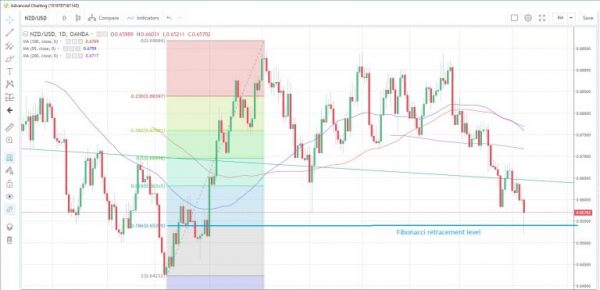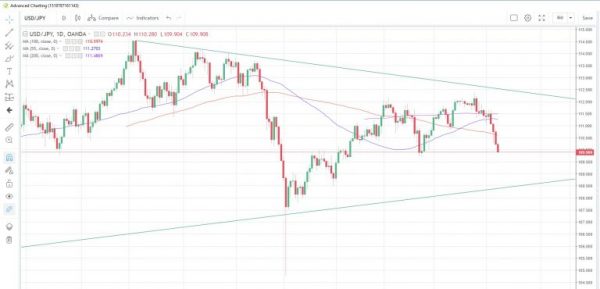NZD/USD touches six-month low
The Reserve Bank of New Zealand cut its benchmark rate by 25bps to a record low 1.5%, its first cut since November 2016, at its rate meeting this morning. Most economists and analysts had expected such a decision yet NZD/USD fell more than 1% to 0.6521, the lowest since November 1, as the accompanying statement suggested there was room for further cuts going forward.
In its published rate path, it sees the Official Cash Rate (OCR) at 1.36% in June 2020 (the previous estimate was 1.81%). In addition, inflation forecasts were marked lower to 1.7% in 2020 from 2.0% previously. RBNZ Governor Orr said that a lower OCR is necessary to support the outlook for employment and inflation consistent with its policy remit.
NZD/USD spiked lower to 0.6521 but quickly pared losses to sit at 0.6580. Prior to the announcement it was trading just above 0.6600.
NZD/USD Daily Chart
China’s imports surge in April
China’s imports rose 4.0% y/y in US dollar terms, beating economists’ expectations of a 2.1% contraction. That was the biggest expansion in six months. However, the data series also highlighted that imports of iron ore, the backbone of Australia’s exports to China, were 340 million tons year-to-date. That was the lowest total since February 2016.
Exports fell 2.7% y/y and so the trade surplus narrowed to $13.8 billion, well under forecasts of $34.6 billion. China’s trade surplus with the US increased to $21.0 billion in April from $20.5 billion, bringing the year-to-date total to $83.7 billion. That compares with $62.7 billion for the same period last year.
The reaction in currency markets was quite muted, with AUD/USD rising a mere 6 pips to an intra-day high of 0.7026. USD/JPY edged lower to 109.92, the lowest since March 26, but that was more a function of safe-haven yen buying on the back of potential trade war issues rather than the China trade data.
USD/JPY Daily Chart
Speeches overtake data
Today’s data calendar is filled more with central banker speeches rather than data. Starting with Bank of England’s Ramsden, ECB’s Draghi comes up next to be followed by Fed’s Brainard in the US session.
On the data front, it will be interesting to see if Germany’s industrial production can echo the better-than-expected factory orders data for March, which was released yesterday. UK’s Halifax house prices are seen improving in April, while Canada’s housing starts are also expected to edge up to 196.4k from 192.5k.













